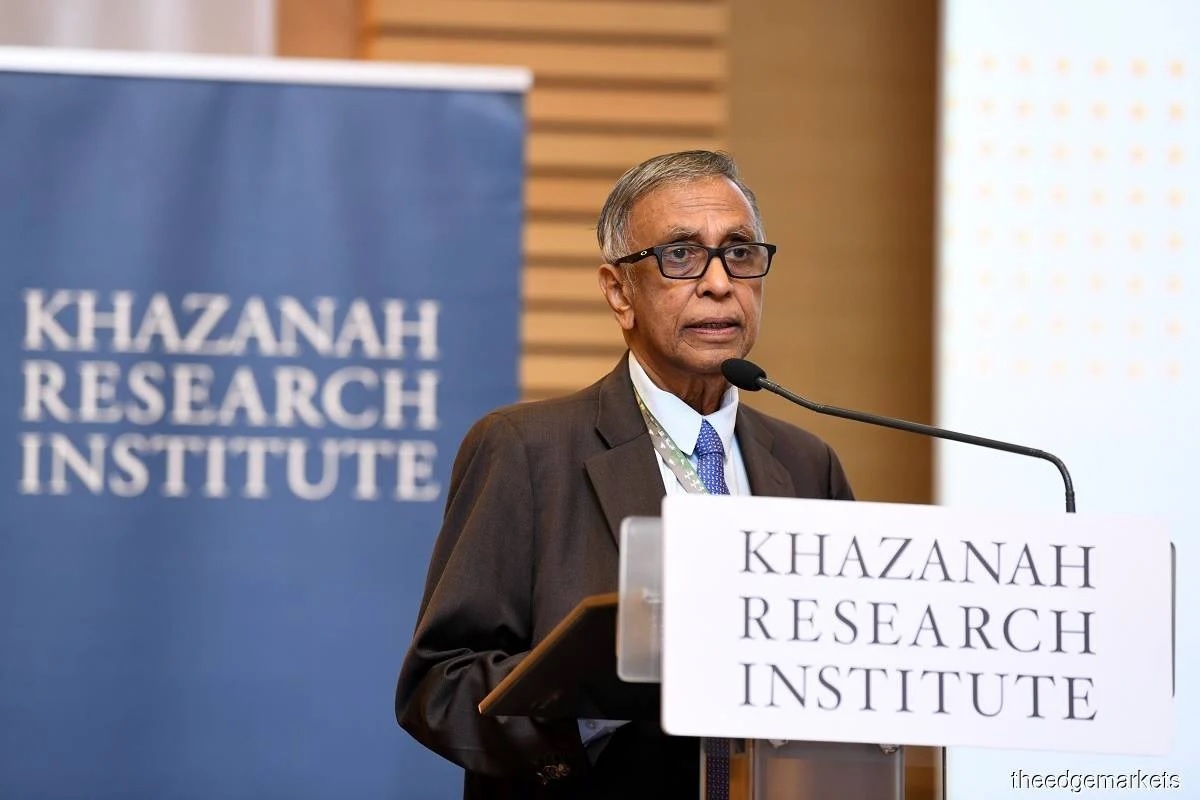
- “Government assistance is usually given when the price of houses supplied by the private market sector fails to meet the needs of the poor. However, when government assistance is given to more than half or almost the entire population, it shows the failure of private market-driven housing provision,” said KRI chairman Tan Sri Nor Mohamed Yakcop.
KUALA LUMPUR (March 15): Putrajaya ought to monitor the prices of affordable housing or rent as the lack of affordable housing supply in the private market could push the number of households into social housing, Khazanah Research Institute (KRI) has cautioned, noting more households are now eligible for government assistance.
Based on KRI's latest report titled “Decent Shelter For The Urban Poor: A Case Study of Program Perumahan Rakyat (PPR)”, nine states and federal territories in Malaysia in 2021 had more than 70% of households eligible for government assistance.
“Government assistance is usually given when the price of houses supplied by the private market sector fails to meet the needs of the poor. However, when government assistance is given to more than half or almost the entire population, it shows the failure of private market-driven housing provision,” KRI chairman Tan Sri Nor Mohamed Yakcop (pictured) said on Wednesday (March 15) in his speech during the launch event of the report.
Nor Mohamed said the phenomenon of the M40 group needing governmental help to access housing will result if the free market is allowed to build expensive houses.
In the report, KRI stated that there is little merit in housing policies that solely focus on the poor, in the hope that the market will take care of the rest, without ensuring the proper functioning of the market.
“Housing policy cannot only focus on managing the housing of the poor without considering housing transactions in the free market,” Nor Mohamed stressed.
“The research findings show that there is a 'universal housing queue' phenomenon that makes it difficult for the poor to occupy good housing, while those who are in the closest range to the poor will remain with low-quality housing in the free market.”
PPR residents reluctant to move out
KRI research assistant Puteri Marjan Megat Muzafar, in her presentation, said that PPR residents surveyed have expressed constraints to move out from PPR housing to the private market due to limited options.
She said that a market rent study by the National Institute of Valuation (Inspen) in 2019 found that the choice of rental schemes with a rate below RM500 to be limited.
And for higher rental rates of around RM500 to RM1,000, the number of rental units does not match the percentage of PPR residents who have the ability to rent beyond basic needs.
“If residents are considering buying a home in the private market, their options are typically limited to flats, cluster homes, and apartments. In addition, most of these residences have a built-up area smaller than 700 sq ft of a PPR unit,” she said.
The report analysis found that more than half of PPR renters (51%) across all income ranges were reluctant to move out, particularly those with a household income of below RM2,500. And only 166 renters (6%) expressed an intention to leave if provided the opportunity.
“Despite demonstrating the capacity to exit social housing, most of the tenants (47.7%) identified as being able to do so opted to stay. On average, only 7.3% of these tenants indicated that they would leave the PPR while 44.7% of them cite locational and characteristics of the prospective housing unit as major factors influencing their decision to exit social housing,” KRI wrote.
Five PPRs were selected in the assistance of the case studies for this report, which are PPR Beringin, PPR Wahyu, PPR Kerinchi and PPR Salak Selatan in Kuala Lumpur, and PPR Jalan Sungai in Penang. A total of 3,878 households took part in the survey conducted from 2016 to 2017.
“More than 80% of households have lived in the PPRs for at least five years. More than 30% of residents in PPR Beringin, PPR Wahyu, and PPR Salak Selatan settled from squatter houses while 67.1% of residents in PPR Kerinchi previously occupied longhouses,” KRI wrote.
It said the number of households in poverty from the five PPRs surveyed is greater than 60% (those earning less than the poverty line income of RM2,208) with more than 21% considered as “hardcore poor” (earning less than food poverty line income of RM1,038).
“More than one-third of households had an increase in income after moving into the PPR, although more than 40% reported no changes. Households are more likely to experience income changes the longer they stay,” the report wrote.
The research also found that the household sizes in these PPRs tend to range between three to six members per household, with nucleus families making up 64% of the households. One in 10 households has a member with disabilities. Around 14% of households experience overcrowding, which is defined as having more than two persons per bedroom.





